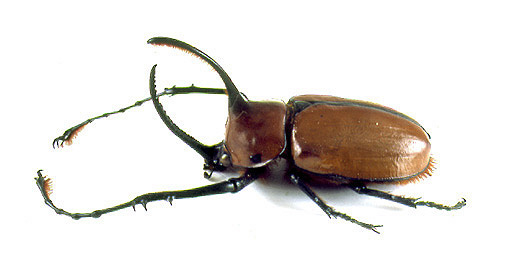Coleoptera - The Beetles

The beetles are the most successful group of complex animals on Earth, forming almost one third of all described animal species and about two fifths of all insects. When the British scientist J.B.S. Haldane was asked what could be learned about "God" from the study of "His" creations, he purportedly replied, "..an inordinate fondness for beetles." - with 300,000 known species, that seems fairly accurate. Designed to fit all sorts of ecological niches, beetle diversity is extreme. They costume themselves with countless combinations and variations of color and texture; spikes and horns. They range in size from 0.25mm to 20cm ( 0.01" to 8" ) and occur in almost all habitats throughout the world, feasting on a wide variety of resources too diverse to list. This versatility allows them to be found in such places as the black depths of caves, beneath the surface of fresh water, within human dwellings and in the bowels of ant colonies, where they live as commensal guests. Some have even become parasites, exploiting other insect species. According to the fossil record, beetles first appeared during the Permian period, about 280 million years ago. The word "Coleoptera" is derived from the ancient Greek words for, "sheath-wing", referring to the characteristic thickened forewings, called "elytra". In most families elytra are hard and protect the hindwings, which remain folded beneath when the beetle is at rest. The delicate hindwings are brought out only when the beetle wishes to fly. Although most beetles have wings and the power of flight, some species have devolved and lost these attributes. All beetles pass through a larval stage. As larvae, they lead a multitude of different lives, depending on the species. Some larvae have well-formed legs and those of many predatory species are highly active, hunting other arthropods from the moment they are born. Those that live hidden, burrowing existences are known as grubs. Other kinds of beetle larvae are: wireworms, mealworms, woolly bears (this name is also shared by a caterpillar) and glow-worms. As a final note, we wish to say that all the colors of the beetles on view here are real, even the gold and silver hues. Although these colors may seem unearthly, the fabulous metallic sheens and shimmering iridescence are caused by simple optical interference, such as it occurs in a diffraction grating.
 Long-horned Beetles (Cerambycidae)
Long-horned Beetles (Cerambycidae)
 True Weevils or Snout Beetles (Curculionidae)
True Weevils or Snout Beetles (Curculionidae)
 Larder and Museum Beetles (Dermestidae)
Larder and Museum Beetles (Dermestidae)
 Predaceous Diving Beetles (Dytiscidae)
Predaceous Diving Beetles (Dytiscidae)
 Water Scavenger Beetles (Hydrophilidae)
Water Scavenger Beetles (Hydrophilidae)
 Fireflies/Lightning Bugs (Lampyridae)
Fireflies/Lightning Bugs (Lampyridae)
 Passalid or Peg Beetles (Passalidae)
Passalid or Peg Beetles (Passalidae)








